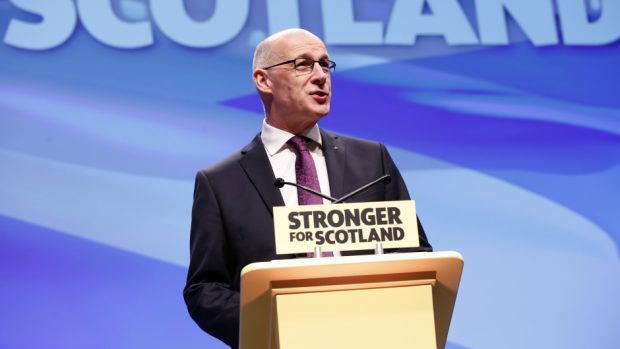Scotland has tumbled down international education rankings for a host of core schools subjects.
Education Secretary John Swinney admitted the figures – including the worst-ever for science – make for “uncomfortable reading”.
The survey of 15-year-olds found Scotland’s performance in reading and maths had also declined relative to other Organisation for Economic Co-operation and Development (OECD) countries.
One of Scotland’s leading educationalists said it was “no longer credible” to describe the country’s education system as “world-leading”.
Scotland was ranked above the OECD average for reading and science in the 2012 study, and average in maths, but is now close to the average for all three subjects.
For science, the Programme for International Student Assessment (PISA) results showed 12 countries doing better than Scotland, including England, Australia, Estonia, Finland and Slovenia.
In mathematics, Estonia, Finland and Slovenia again scored above Scotland, as did Norway, Belgium, Ireland and Poland.
There were also 13 countries with higher scores in reading, including Estonia, Poland and Slovenia, as well as Ireland, Finland and Norway.
“Compared to 2012, a greater number of countries performed significantly higher than Scotland,” the report said.
“There was a small increase in the number of countries similar to Scotland and a decrease in the number of countries below Scotland.”
The OECD research surveyed about 540,000 students worldwide in 2015 and uses a points system to rank 72 countries against each other, also looking at countries such as Scotland which are part of larger states.
Mr Swinney said: “There is great strength in Scottish education but these results underline the case for radical reform of Scotland’s education system.
“The results undoubtedly make uncomfortable reading but they contain a plain message: we must continue to make the changes that are necessary to strengthen Scottish education.
“We must recognise that while Pisa is only now being published, it dates from the period in which our own statistics on literacy and numeracy were published and prompted our current programme of reform. Both sets of figures tell us the same thing: reform is essential.
“That is why last year we launched a comprehensive programme of reform, based firmly on the independent findings of the 2015 OECD review of Scottish education.”
Countries such as Australia, Germany, the Netherlands, New Zealand and Norway maintained their performance but moved ahead of Scotland as its score declined.
Meanwhile, Slovenia saw a 24-point improvement over the three years, overtaking Scotland.
Keir Bloomer, chairman of the Commission on School Reform, said: “It is no longer credible to describe Scotland’s education system as world-leading.
“There is a critical and urgent need to examine how Scottish education is run and the Scottish Government’s stated intention to empower teachers, parents and schools must be matched by action.”










